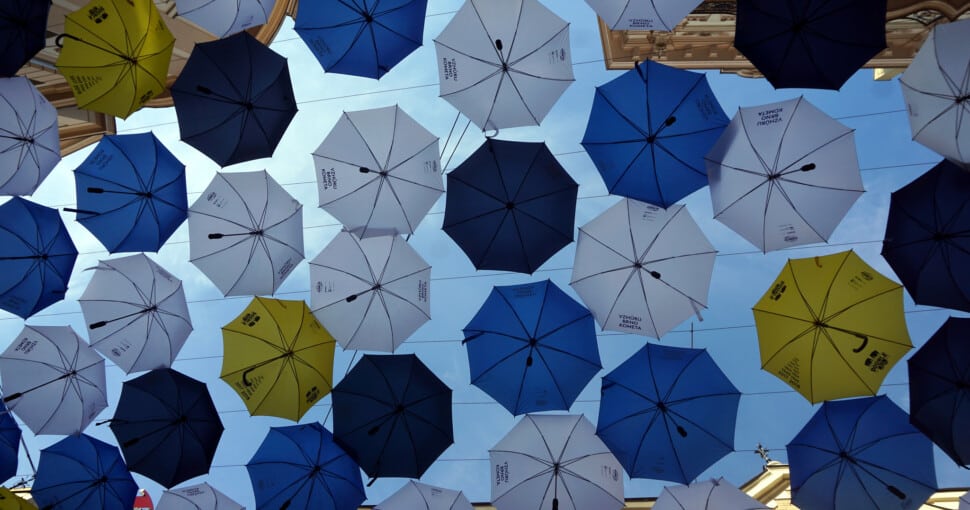Umbrellas are so much more than a shield from the sun and rain. Umbrellas have a rich history that can be traced back over three thousand years. During this time, the humble umbrella has been a status symbol, a shield against elements and gods, a murder weapon, the cause of accidental deaths, and part of religious regalia. Thankfully, umbrellas are no longer an item only attainable by the wealthy, as they are super handy to have.
Contents
Today we think of umbrellas as a tool to keep one dry on a rainy day. The name umbrella gives us a clue about the original use of umbrellas. Umbrella is derived from the Latin word for shade or shadow. Umbrellas were used to protect nobility from the sun. In Egypt and in China, this was the original purpose of umbrellas.
If you could afford an umbrella, it showed a level of status. Historically, umbrellas and parasols were often elaborately decorated. Today such elaborate umbrellas are still used in religious ceremonies by some orthodox churches.
Nowadays, umbrellas are used functionally to shield the user from the sun or rain, and many improvements have been made to the design to make them affordable, practical, lightweight, and even fun. Some designs even include a torch for additional convenience.
Nature has a vast array of interesting plants. Umbrellas come in many shapes and sizes. In the same way, plant leaves differ, with some leaves being large and others being small. Plant leaves may be the shape of an umbrella, and sometimes a whole tree can have an umbrella shape. Let’s find out about a few plants that look like umbrellas.
1. Umbrella Sedge
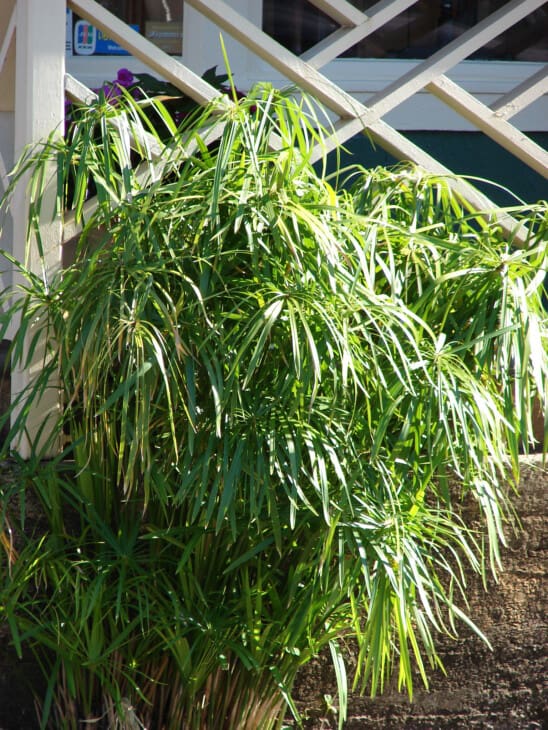
Umbrella sedge (Cyperus alternifolius) is also called Umbrella palm, Umbrella-grass, or Umbrella papyrus, and it belongs to the Cyperaceae or sedge plant family. Though the umbrella sedge is native to West Africa and Madagascar, these plants are grown worldwide in warmer regions.
As the name indicates, this sedge has a long stem with a layer of green leaves on top that form an umbrella. The umbrella sedge is a water plant that grows about three feet tall and is ideal for wetlands and ponds. This umbrella-shaped plant is excellent as a filter for grey water, and as a bonus, the seed it produces attracts plenty of birds to the garden.
Umbrella sedge is cold-sensitive, so it may need to spend the cold season indoors in temperate regions. Fortunately, umbrella sedge grows well indoors as long as it has sufficient water and sunlight. Umbrella sedge spreads vigorously via its rhizome system and must be regularly thinned out in confined growing spaces.
2. Dwarf Umbrella Tree
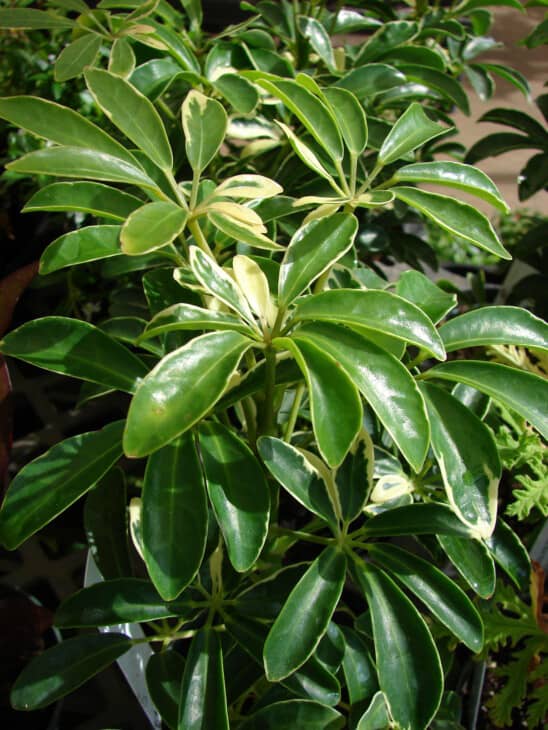
Dwarf umbrella trees (Schefflera Arboricola or Heptapleurum arboricola) are Araliaceae plant family members. This plant family contains more than one thousand five hundred other species. Dwarf umbrella trees are native to China and Taiwan, but they can be found in homes across the globe today.
With umbrella trees, it is the compound leaf that resembles an umbrella. Dwarf umbrella tree leaves are palmately compound. It comprises seven to nine leaflets arranged in a circular pattern around the leaf stem. Each leaflet is between three and eight inches long, making each umbrella-shaped leaf around sixteen inches across.
The dwarf umbrella tree can grow as tall as thirty feet but can be trimmed to remain a more suitable size as an indoor plant. You can also find variegated dwarf umbrella tree varieties that may suit your home or garden better.
In addition to the glossy umbrella-shaped leaves, the dwarf umbrella tree produces large bunches of yellow flowers that produce bright bunches of berry-like fruit. The fruit is orange when unripe and turns deep red when ripe, attracting many birds to the garden if your dwarf umbrella tree is grown outdoors.
3. Astilboides
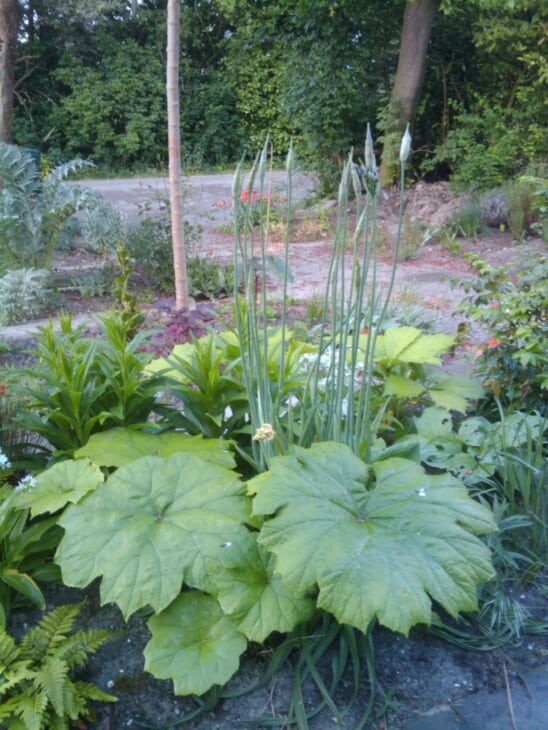
The Astilboides plant (Astilboides tabularis) is sometimes called the shield-leaf Rodgersia, but it is generally called by its botanical name. Astilboides plants belong to the Saxifragaceae family and are perennial plants native to China.
Astilboides plants have huge leaves that resemble umbrellas and can measure three feet across. The leaf stem attaches to the center of the leaf and causes a slight indent. This indentation looks like an umbrella that has not been opened completely.
Astilboides plants grow best in semi-shade and need a moist and cool environment to thrive. In addition to the spectacular leaves, Astilboides bear clusters of tiny white star-shaped flowers on tall flower stems that extend above the foliage. Astilboides are propagated by tiny seeds or dividing the plant after it has gone dormant.
4. Mayapple
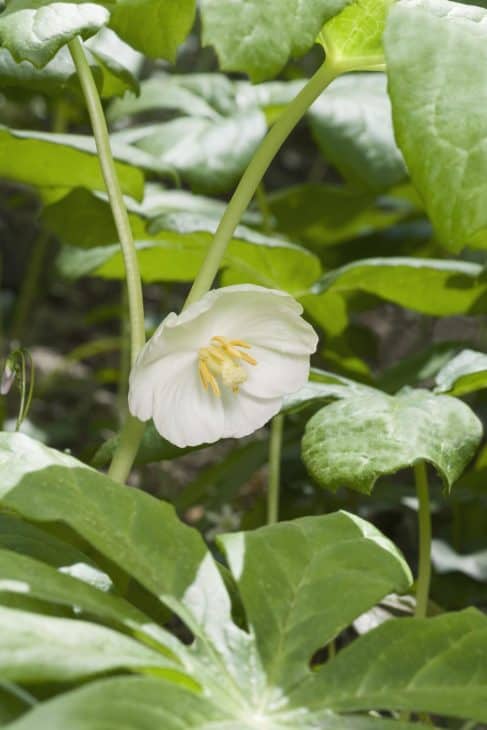
Mayapple (Podophyllum peltatum) is also called ground lemons, American mandrake, umbrella plant, and Devil’s apple. Mayapples are one of around seven hundred species in the Berberidaceae plant family. This perennial plant is native to North America and Canada.
The mayapple plant’s leaves bear a distinct resemblance to an umbrella with five to seven lobes. The leaves typically have a diameter between eight and sixteen inches and grow on tall stems roughly sixteen inches tall.
The mayapple produces a flower in the joint where the stem splits to form a second leaf. The large and attractive flowers are mostly hidden from sight by the large umbrella-like leaves. A lemon-flavored fruit is produced from this flower and ripens late in summer. The fully ripe fruit of the mayapple is the only edible part of this poisonous plant.
Though poisonous, this plant has traditionally been used medicinally to reduce tumors and treat warts. Mayapples propagate via seeds that animals like box turtles, raccoons, and skunks spread when they feed on the fruit. Mayapples also spread by means of the rhizome root system that connects the plants.
5. Nasturtiums
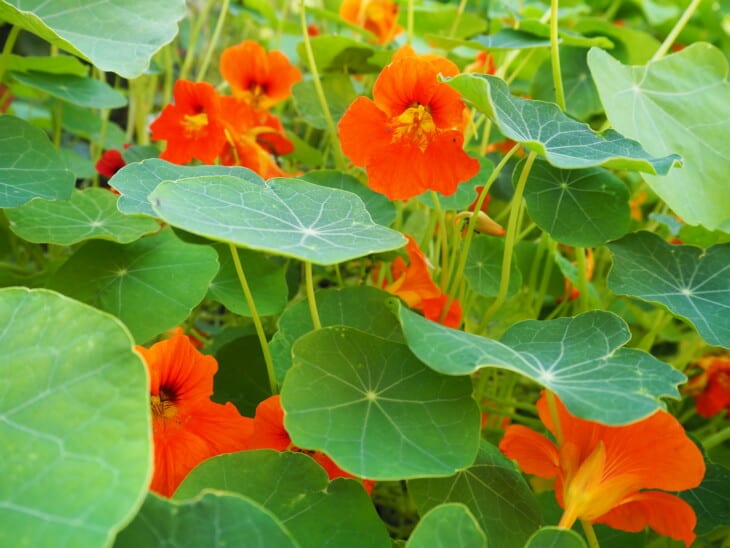
The brightly colored nasturtium (Tropaeolum majus) goes by names such as Indian, Mexican, or Peru cress. These names give us a clue regarding their native land, as they originate from Central and South America. In the tropical jungles of Peru, the nasturtium grows as a perennial plant, but it has an annual growth pattern in more temperate regions.
Nasturtium plants have round or shield-shaped leaves that attach to long fleshy stems like little parasols. The nasturtium flowers are brightly colored in yellow, orange, and red hues. The umbrella-shaped leaves are dark green with light-colored veins that form a web print on the leaf. The veins start from a central point just off center where the stem connects on the underside.
All above-ground parts of the plant are edible and have a peppery taste. The seeds can be pickled and used as a substitute for capers. Nasturtium has also long been used as medicine to clear chest infections and urinary-related infections. In Germany, a herbal antibiotic made from nasturtiums and horseradish root is prescribed for such infections.
6. Umbrella Plant
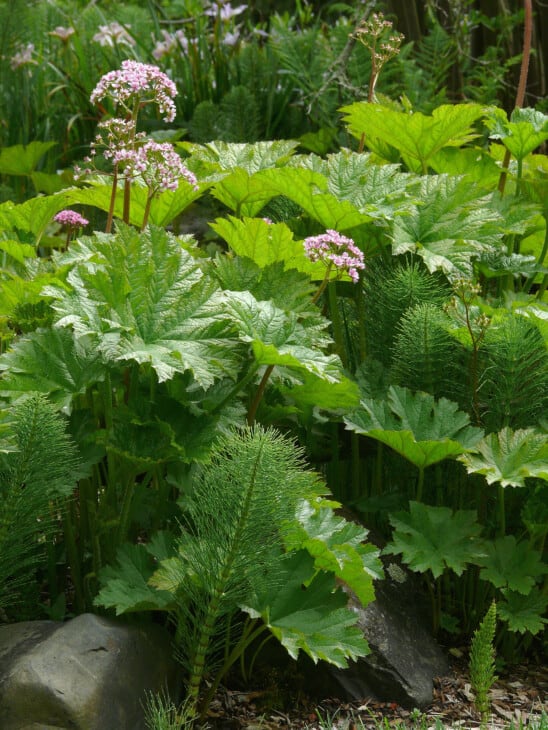
The umbrella plant (Darmera peltata) is called Indian-rhubarb or Chinese rhubarb. The umbrella plant is native to the Western parts of the United States but has become naturalized in Ireland and Great Britain. The umbrella plant is a perennial herb that dies back in winter. As the name indicates, this plant has large umbrella-like leaves measuring up to twenty-four inches across.
Umbrella plants grow well along streams or beside ponds in semi-shade. Umbrella plants push their flower stems up from their rhizomes in late spring before any leaves appear. The flower stems can be as tall as six feet, and the white to pink colored flowers are small but form large bunches. The leaves only appear after the blooms.
The large leaves are carried on fleshy, edible stems that grow directly from the rhizomes and are as tall as six feet. The stem attaches to the center of the leaf and forms clearly visible veins from this central point toward the edge of the leaves. In fall, the leaves change color and provide a bright display resembling red umbrellas.

